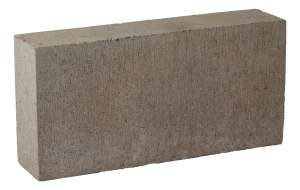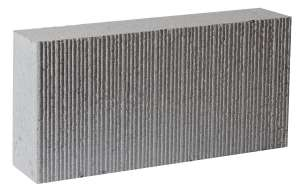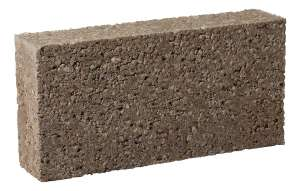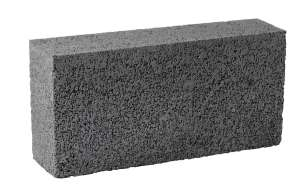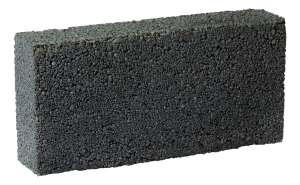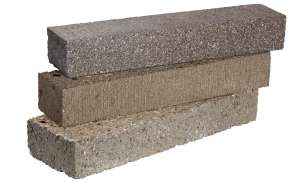LIGNACITE LTD
Suppliers of: Concrete Blocks Masonry Blocks Dense Concrete Blocks lightweight blocks building Blocks Concrete Blocks Concrete Soffit Blocks concrete
Lignacite are a leading manufacturer of concrete and masonry products and have one of the most efficient and modern manufacturing sites in the U.K.
Sustainable and Environmentally Sensitive Manufacturing
Lignacite sets the standards for sustainable and environmentally sensitive manufacturing. Our curing chambers re-use heat given off by the exothermic reaction between cement and water and when additional heat is needed, gas emissions are pumped back into the chambers, where blocks absorb CO2.
All water used at Brandon comes from a on site borehole, and is recycled at up to 5000 gallons / hour. Sand and aggregate quarried on land adjacent to the plant saves around 36,000 lorry journeys over the period of extraction. The land is then restored on an annual basis for wildlife conservation.
Main Product Ranges:
Concrete Blocks
All our products are Kitemarked as conforming to BS EN 771-3 Aggregate Concrete Masonry Units. They comply with category 1 Masonry Units and are manufactured under a quality assurance scheme assessed and certified to BS EN 9001:2000 by the British Standards Institute.
Lignacite concrete blocks comprise a range of medium density loadbearing units, used in internal or external walls. Lignacite blocks contribute to sound environmental practices as they contain graded wood particles, a selected waste wood product as an alternative aggregate. They also provide exceptional sound reduction qualities.
Concrete Blocks - Lignacite Ash GP:
Ash GP is a medium density concrete block which is robust, durable and suitable for a range of walling applications. Typical uses include the inner leaf of cavity walls when used with cavity insulation, separating or partition walls, and infill blocks in beam and block flooring systems. Ash GP can also be used externally where rendering or cladding is to be applied to the wall. Ash GP blocks provide a strong background for holding fixings. Ash GP is produced using at least 35% of recycled aggregate (by volume) thereby conserving valuable sources of primary material.
Concrete Blocks - Fibo850 Blocks:
Fibo850 is an excellent light weight house builder block. The block is manufactured from expanded clay lightweight aggregate, and contains up to 24% recycled aggregates by volume.
Lignacrete is a robust and durable block that provides a good background for fixing, and that has excellent acoustic properties and thermal capacity. Lignacrete blocks are used in internal or external walls and manufactured from cement, sand and dense aggregates, and contains up to 20% recycled aggregates by volume.
Further technical information is available to download from the BPi download Library or directly from the manufacturer’s own website.
Lignacite - An introduction to fair faced blocks and their benefits
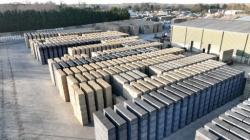 Take a look at our introductory guide to fair faced blocks, including their benefits and how they are finished - as well as an insight into Lignacite's own Fair Face block.
Take a look at our introductory guide to fair faced blocks, including their benefits and how they are finished - as well as an insight into Lignacite's own Fair Face block.
Not all blocks are made equal. This is because they are designed for different purposes and applications. Fair faced blocks, for instance, are carefully manufactured so that they can be used without any additional finishes.
But how is this achieved? Let’s dig a little deeper into what a fair face block is.
What is a fair faced block?
Fair faced blocks are concrete masonry products that are specifically designed to be used in places where they will be visible. This means they are often used in external and internal walls, partition walls and facades.
Unlike paint grade blocks, which are developed to be painted on directly, fair faced blocks are left without any additional finishing touches, such as rendering, paint or plaster.
To ensure they look good in a completed building, fair faced concrete blocks are made with extra precision to ensure their surfaces are smooth.
What is the difference between fair faced concrete blocks and standard concrete blocks?
Fair faced concrete blocks have a much finer finish to them to make their surface visually appealing and smooth.
A standard block, on the other hand, may have a rougher texture. Less consideration is paid to its colour and finish because it will probably be covered up by plaster or another material.
Types of fair faced concrete block
Fair faced concrete blocks come in different strengths and sizes depending on the manufacturer that you buy from.
Our Lignacite Fair Face masonry block is part of our signature, medium-density Lignacite range. They have a medium-grey colour and are particularly suited to indoor applications, such as separating walls and internal partitions. They come in thicknesses of 100mm or 140mm and boast A1 fire ratings, which means they make no contribution towards fire.
You can find out more about our Lignacite Fair Face blocks and the other blocks in the Lignacite range on our product pages.
How do fair faced blocks get their finish?
Fair faced blocks are designed to have no additional finish. As a result, they are crafted so that they have a finer texture. This is more visually appealing than other types of concrete blockwork.
To do this, concrete aggregates must be selected carefully. Attention must also be given to the ratio of aggregates to water and cement as this will affect the end look of the fair faced block. A little too much water can create bleeding, for instance.
The curing process is also vital for ensuring a uniform finish. Extra attention is given to the shape and size of each block to promote this uniformity too.
What are the benefits of fair faced concrete blocks? Aesthetic appeal
Fair-faced concrete blocks offer a visually pleasing appearance with their clean lines and smooth surfaces. This enhances the aesthetics of a building.
Versatility
Fair-faced blocks come in a variety of sizes. This gives architects and developers flexibility when it comes to creating unique designs. Our blocks can be used for interiors in both loadbearing and non-loadbearing walls.
Fire resistance
Concrete blocks offer excellent fire resistance. Fair faced blocks are no different, providing added safety and protection to inhabitants.
Sound insulation
Concrete blocks have great sound insulation properties, helping to reduce noise transmission between rooms and from outside.
Our Lignacite blocks have been independently tested to check the level of sound insulation provided. A 100mm wall provides an impressive Weighted Sound Reduction index (Rw) of 46dB. Applying an acoustic treatment to one side of the wall has been verified to provide an uplift to the performance of 10dB.
Find out more about the sound insulation of our blocks.
Can you paint fair faced blockwork?
Yes, you can paint fair faced blockwork. However, a fair faced block is intended to be on show. This means it has extra attention paid to it to ensure smoothness, good colour and uniformity.
If you are intending to paint your concrete walls, a paint grade concrete block may be more suitable.
Take a look at our Lignacite Paint Grade products here.
Find your next fair faced masonry
If your next project wants to take advantage of the aesthetics of fair faced blocks, get in touch with our team!
Call 01842 778485 today to find out more about our Lignacite Fair Face products.
Lignacite - BREEAM scoring and assessment: how it works
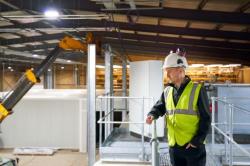 Learn how BREEAM scoring and assessment works and how our blocks can help you achieve the rating you’re aiming for.
Learn how BREEAM scoring and assessment works and how our blocks can help you achieve the rating you’re aiming for.
As climate change makes itself felt, developers, architects and builders are changing the way they operate in order to promote more sustainable building practices. To help direct their action, and showcase their success, environmental assessment methods such as the Building Research Establishment Environmental Assessment Method (BREEAM) are growing in popularity.
But what does BREEAM consist of and how does BREEAM scoring work?
What is the BREEAM assessment process?
The BREEAM assessment process will vary a little depending on when you decide to start it.
It’s advantageous to involve a BREEAM assessor as early in the construction process as possible. However, BREEAM can be applied retrospectively or during the construction phase if necessary.
Here’s an outline of the BREEAM process from the very beginning.
Feasibility stage: At this stage of the BREEAM certification process, you engage a BREEAM assessor during your building’s design phase. This has the benefit of giving you feedback from a pre-assessment. You can then use this information to fine-tune your design to maximise your building’s rating potential.
Design stage: Once your design is finalised, the BREEAM assessor will formally analyse your building’s design against the BREEAM criteria. You will then be issued with a Design Stage Certificate.
Construction stage: When you begin construction, the BREEAM assessor will return and carry out another assessment. Once the building is complete, they will then check that you have actually implemented what you set out in your building design. This is known as the post-construction assessment.
Review stage: The assessments are then sent to the Building Research Establishment (BRE) to be reviewed. If they are satisfied, you will then receive your final BREEAM rating.
What are the BREEAM assessment criteria?
The following are all part of the BREEAM assessment criteria:
Ecology: This examines the ecological value, conservation and enhancement of your proposed development site.
Pollution: This considers your actions to limit air and water pollution.
Waste: Waste is a huge issue in construction. You must therefore demonstrate how you will use your resources efficiently and minimise waste.
Energy: This will look at how you manage your operational energy.
Management: This refers to your management policy, commissioning, site management and procurement processes.
Water consumption: How you manage your consumption and maximise efficiency.
Health and wellbeing: You must demonstrate how you will protect future inhabitants from indoor and outdoor issues, such as noise and light pollution.
Resources: This part of the assessment will weigh up the embodied impacts of your building materials over their whole lifecycle.
Resilience: This section is a relatively new addition to the assessment, and it focuses on how you assess climate change risks and mitigate them.
Transport: How you manage transport carbon emissions and other location-related factors.
Want more detail? Head over to our helpful article on BREEAM.
How long does BREEAM certification last?
A BREEAM certificate is valid for three years after it is first issued. By making the assessments cyclical, the issuing body (BRE) encourages designers, developers, builders and managers to keep monitoring, reporting and improving buildings’ environmental performance.
How does BREEAM scoring work?
In BREEAM assessments, you are scored according to a weighted system. This means that some assessment criteria are deemed to be more important than others.
For each of the BREEAM assessment categories, you will be awarded points that demonstrate how well you have fulfilled the BREEAM criteria. These points are then multiplied by the weighting factor of each section.
These scores are then added together to produce your BREEAM score.
Points are awarded by independent, licensed BREEAM assessors. Their assessments are then sent to the BRE for review.
What are the different BREEAM ratings?
In a BREEAM assessment, the more points you score overall, the better your BREEAM rating.
Below, we’ve outlined the thresholds in the BREEAM rating system:
Outstanding: Scores that are greater or equal to 85%.
Excellent: Scores that are greater or equal to 70%.
Very good: Scores that are greater or equal to 55%.
Good: Scores that are greater or equal to 45%.
Pass: Scores that are greater or equal to 30%.
Unclassified: Scores that are less than 30%.
What is a good BREEAM score?
In a literal sense, a ‘Good’ BREEAM score is one that has at least a 45% pass mark. For many developments, a ‘Good’ score is a solid achievement as it marks average attainment. For instance, it represents around 50% of commercial buildings submitted for assessment.
However, since 2012, there has been an increase in the number of ‘Very Good’ and ‘Excellent’ ratings for each part of the BREEAM assessment. This suggests that there may well come a time when higher scores are more the norm and a good score will be far higher.
At the moment, a building earning a ‘Good’ rating may not have sustainability as their top priority. For instance, budget constraints may be preventing the designers and developers from going all in and earning the highest scores.
A ‘Very Good’ rating, on the other hand, showcases buildings that have much more advanced good practice and a higher prioritisation of sustainability. But this is still lower than a building earning an ‘Excellent’ BREEAM score, which will demonstrate better practice in terms of the use of proven, modern technology and concepts. This is a much trickier ask, which is why only 10% of buildings achieve this level.
To achieve an ‘Outstanding’ score, buildings really must be innovative. This means that designers and builders must think outside the box more, employing careful planning and embracing the use of new technologies. For this reason, only around 1% of submissions currently achieve this rating.
How using Lignacite concrete blocks can contribute to BREEAM certification
If you’re aiming for a BREEAM assessment for your next project, our blocks can help you to achieve your aims.
For the energy category, you can take advantage of the fact that our blocks can contribute towards reduced energy consumption thanks to their thermal mass. This is particularly the case with our Fair Face products. Their high thermal mass means that they can help to prevent a building from overheating, while also keeping it warmer in the cold months.
In terms of resources, you can earn points for using products that are responsibly sourced according to BES 6001. We also have Environmental Product Declarations (EPDs) for all of our products, which can help you to evaluate your building’s overall performance.
Health and wellbeing is an important category in the BREEAM assessment. Our blocks boast exceptional sound insulation to help protect future inhabitants, earning you valuable points in your assessment.
Talk to us about your next project
If you’d like to find out more about our blocks and see if we’re the right fit for your next project, get in touch! You can call our friendly team on 01842 778485 or drop us an email at info@lignacite.co.uk.






